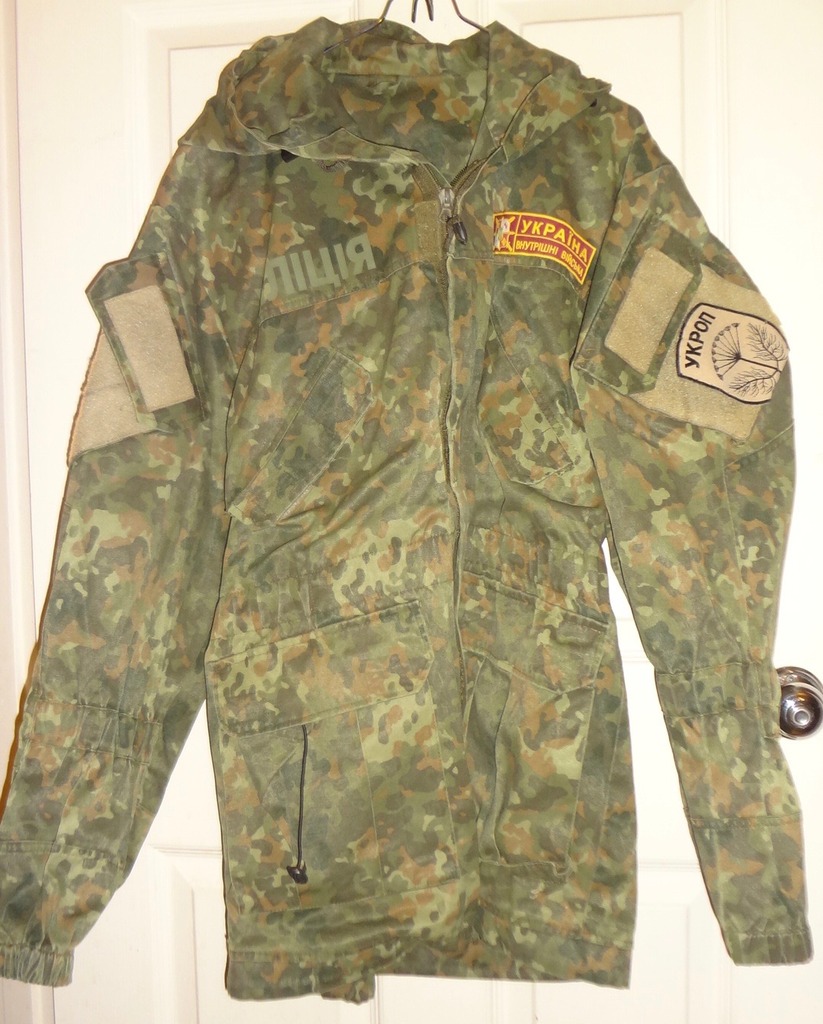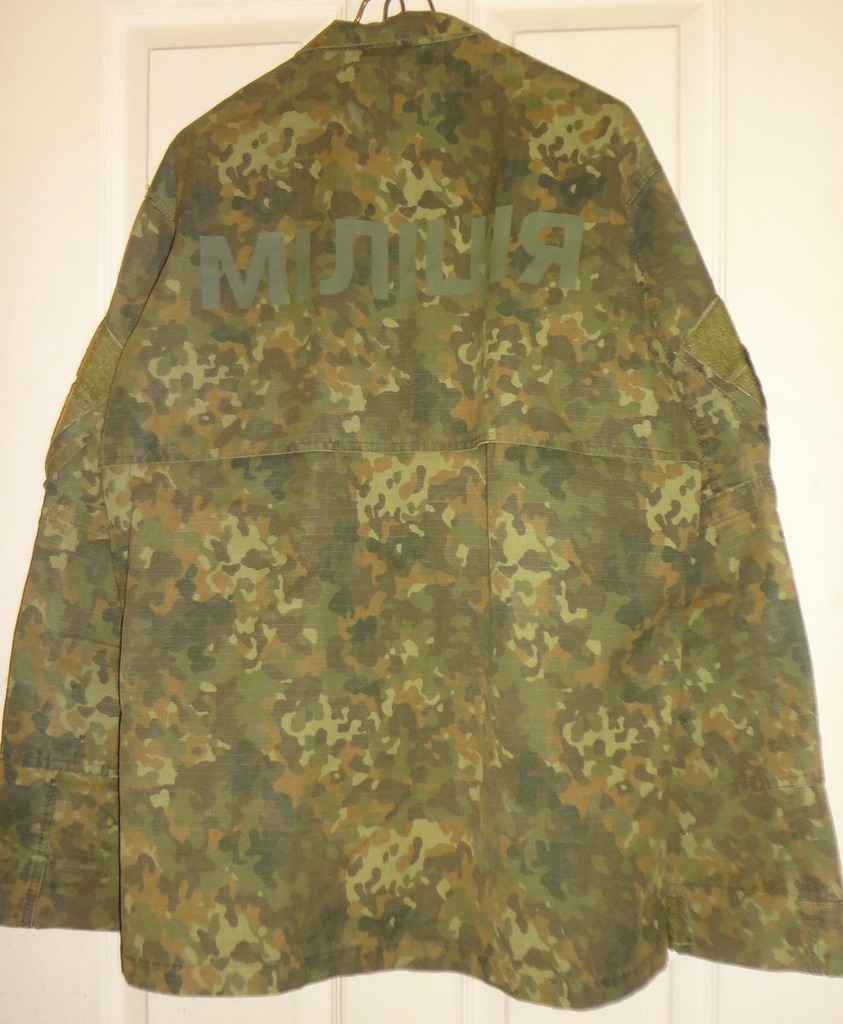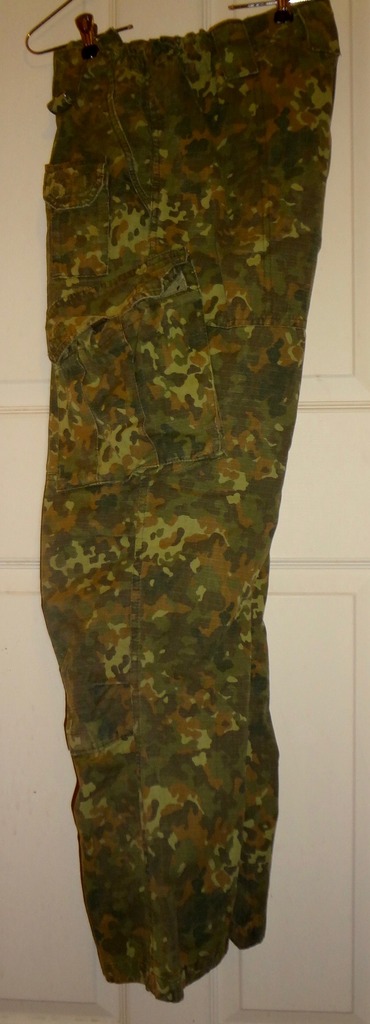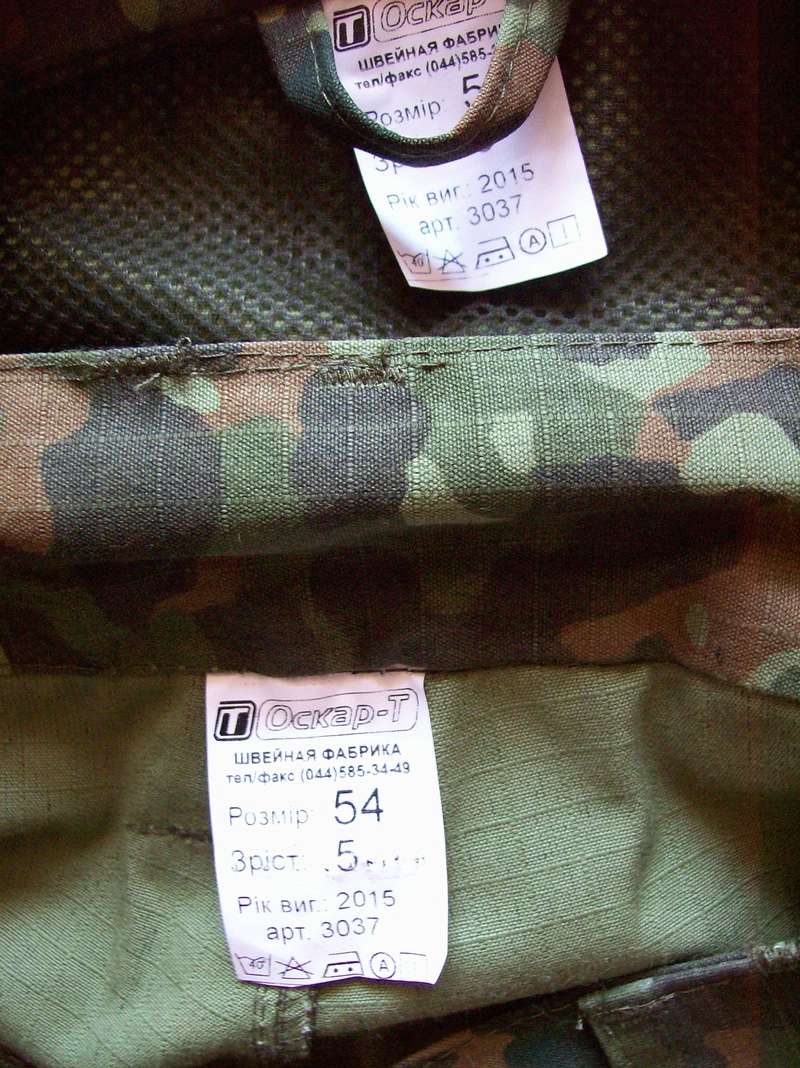 by Haydamaka Mon Aug 27, 2018 11:02 am
by Haydamaka Mon Aug 27, 2018 11:02 am
I can also add some info from a Ukrainian web-site: http://lostarmour.info/articles/rascvetki-kamuflyazha-vsu-i-ukrainskih-sil-v-voyne-na-donbasse/
"Flecktarn/Флектарн/Флек
Типичная картина для 2014-ого года — неуставной немецкий камуфляж, поверх которого бронежилет и каска в уставном «дубке»
На 2018-ый год данная расцветка продолжает оставаться основным камуфляжем немецкой армии. Немецкая форма давно стала популярна по всему бывшему Советскому Союзу благодаря практике Бундесвера централизовано продавать поношенную фору буквально за копейки — найти немецкий китель, штаны или парку в торгующих снаряжением и формой магазинах можно от Минска до Владивостока за одинаково небольшие деньги. На Украине данная форма еще до Майдана была популярна среди организаций украинских националистов, например «Патриот Украины». Эти же люди потом во многом составили костяк некоторых добровольческих батальонов.
Некоторые были экипированы до начала противостояния
В рядах ополченцев данная расцветка тоже не самая редкая, ровно по тем же причинам, однако в абсолютных числах явно уступает проукраинской стороне.
Кроме оригинального немецкого окраса обе стороны применяют и «поделки на тему» от различных фирм производителей. Из наиболее массовых можно отметить форму, которую централизованно закупало МВД Украины — паттерн отличается от немецкого, хотя и очень похож."
The translation is approximately as follows:
"Flecktarn / Fleck
A typical picture for the year 2014 is a soldier wearing non-statutory (for Ukraine) German camouflage combined with the statutory Ukrainian "oak" camouflage bulletproof vest and helmet.
For 2018, Flecktarn continues to be the main camouflage of the German army. The German uniform has long been popular throughout the former Soviet Union thanks to the Bundeswehr's practice to centrally sell shabby odds literally for pennies - to find a German tunic, trousers or a parka in merchandising outfitters and uniforms from Minsk to Vladivostok for equally small money. In pre-Maidan Ukraine this uniform was popular among organizations of Ukrainian nationalists, for example "Patriots of Ukraine". These same people then largely formed the backbone of some volunteer battalions.
Some of these units were equipped in Flecktarn before the confrontation began.
Among the pro-Russian insurgents the German camouflage is also not very rare, exactly for the same reasons, but in absolute numbers it is clearly inferior to the pro-Ukrainian side.
In addition to the original German color, both sides use "hand-made articles" (copies of Flecktarn) from various manufacturers. Of the most massive, you can note the form that the Ministry of Internal Affairs of Ukraine bought centrally - the pattern differs from German, although very similar.
I can also add, that according to my information, pro-Russian troops usually deleted the German flags from the sleeves of Flecktarn jackets, while pro-Ukrainian troops used to leave the German flags, but also often used to change them for Ukrainian flags.













 by
by 





